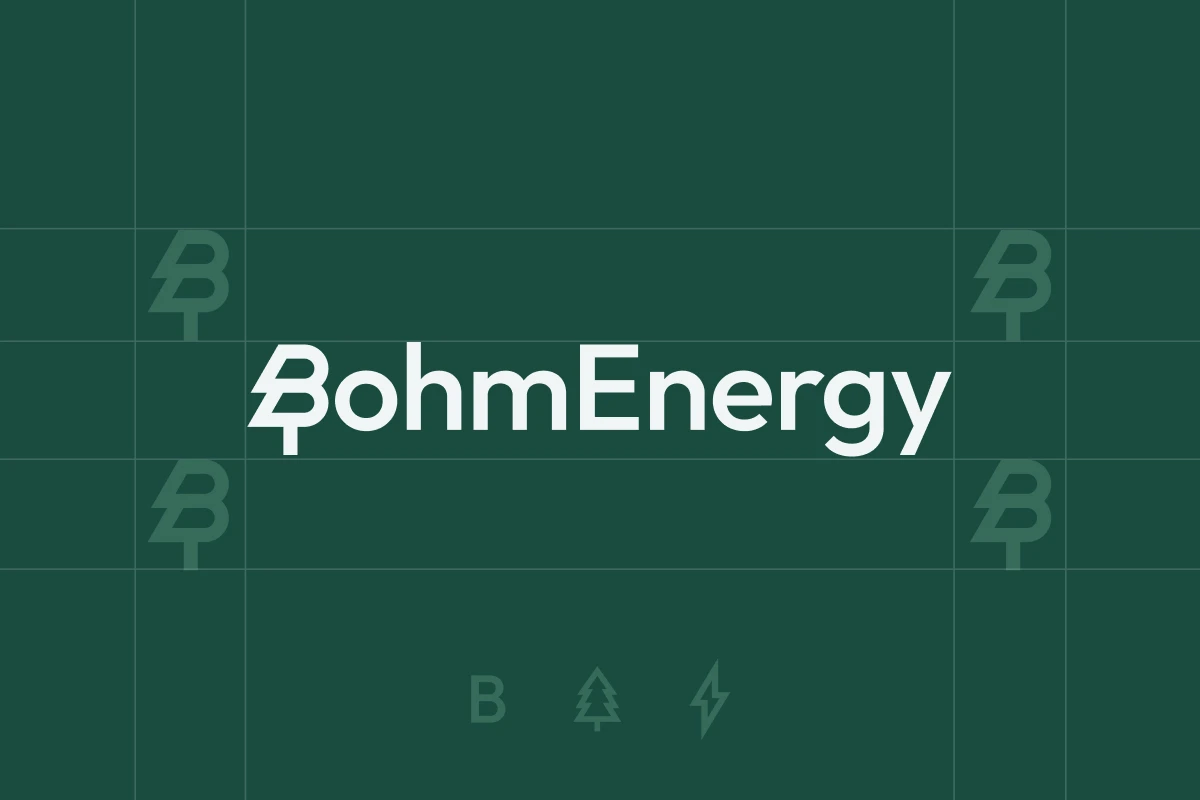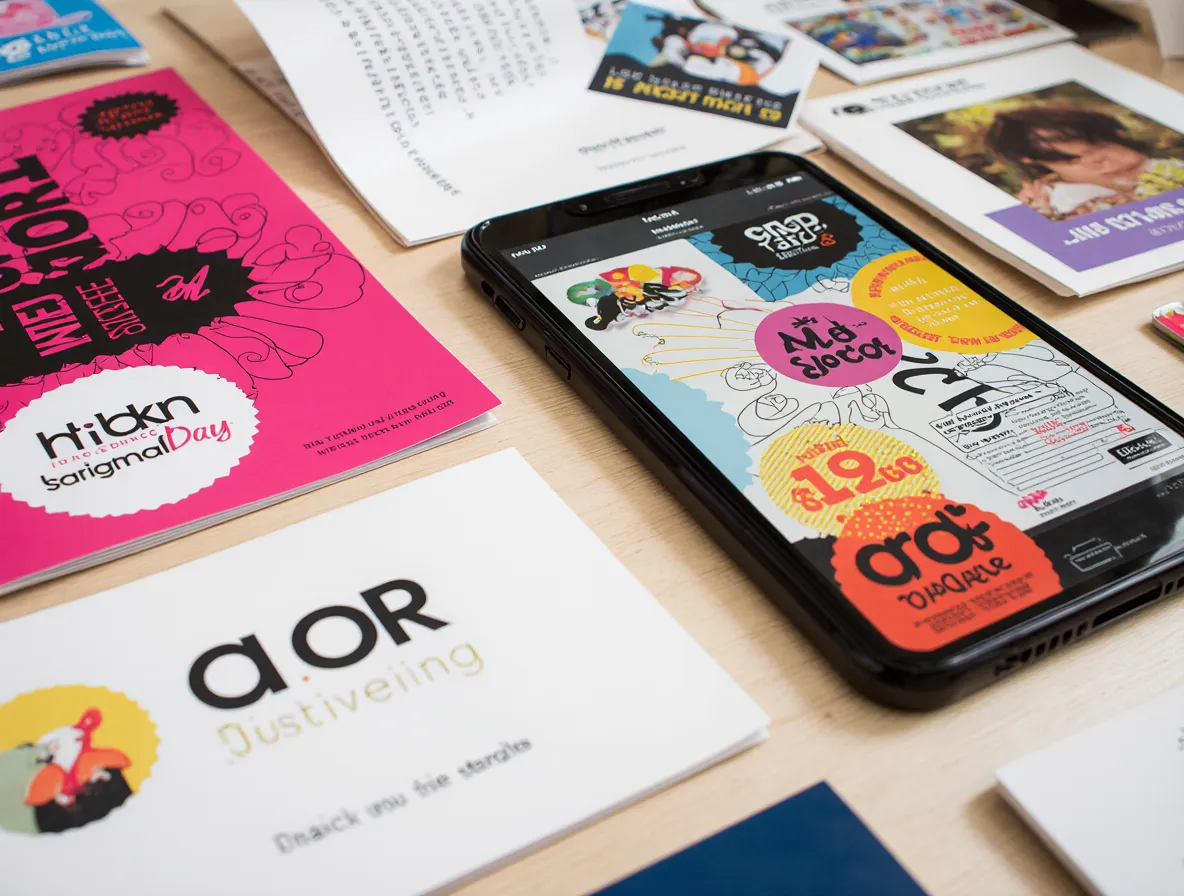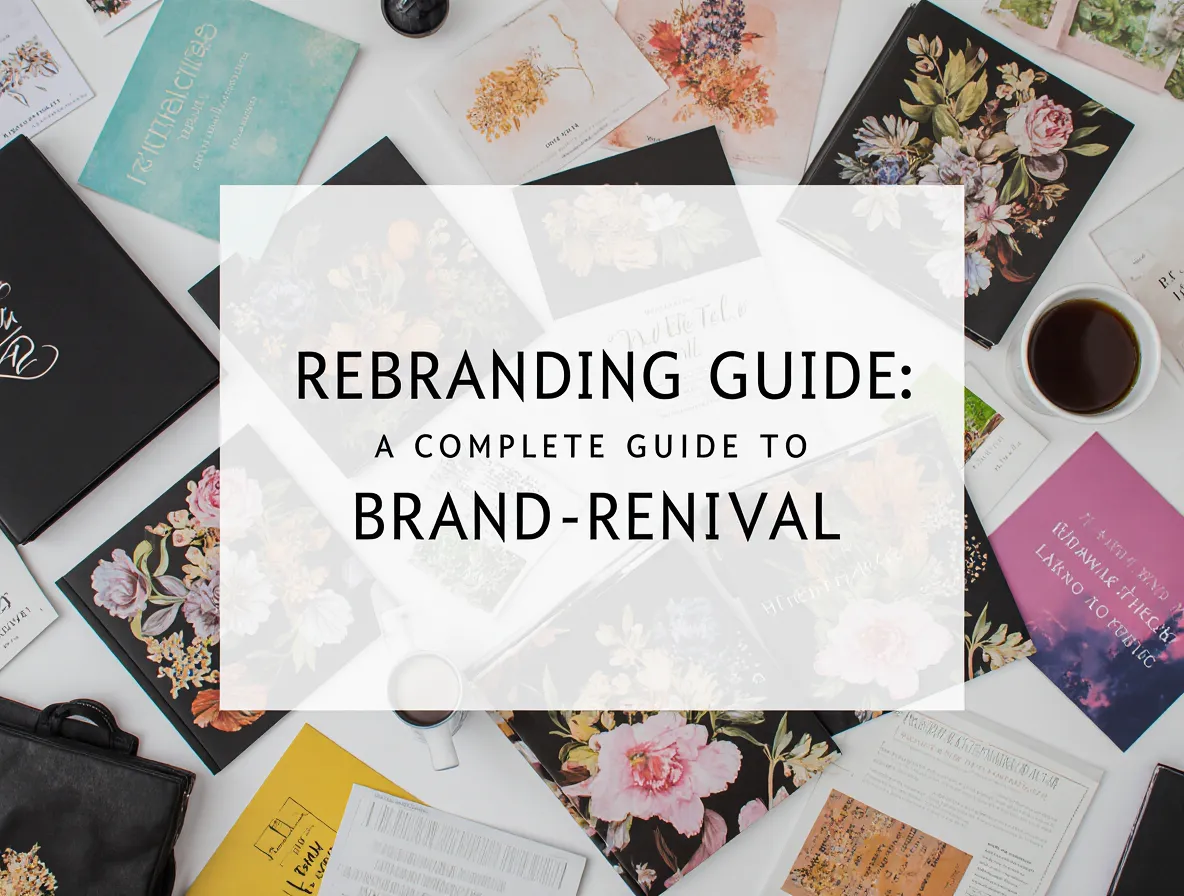Measuring rebrand success depends on tracking brand awareness shifts, customer perception changes, and revenue impact across 90-180 days using surveys, analytics, and sales data tied to business goals.
How Brand Evaluation Changed

Fifteen years ago, companies judged rebranding by asking the CEO if the new logo "felt right." Marketing teams ran focus groups with 20 people and hoped sales would climb. The toolkit consisted of ad recall surveys and basic traffic counts.
The problem was clear: no one could separate rebrand impact from seasonal changes, economic shifts, or other marketing. When sales dropped after a rebrand, was it the new identity or the recession? Nobody knew.
Some companies tried brand tracking studies costing $50,000+ annually. Others used "brand equity calculators" that produced impressive scores but couldn't predict business outcomes. These failed because they measured perception alone, ignoring customer behavior and purchases.
Modern measurement fixes this by combining behavioral data with perception metrics. Instead of asking if people like your logo, we track whether they visit your website more, request demos, and buy. Tools like Google Analytics 4 and HubSpot connect awareness shifts to revenue within weeks.
What Does Success of Rebrand Actually Mean?
Success means your rebrand drives measurable improvements: brand recognition up 15-30%, customer perception improved by 20+ net promoter points, and revenue from target segments growing 10-25% within six months.
Your measurement approach should align with your rebrand scope and business size. Different strategies require different measurement frameworks depending on whether you're a startup building identity from scratch or an established company choosing between full rebrand and brand refresh.
- Rebranding: A Complete Guide to Brand Renewal
- Rebranding Strategies: How to Build a Successful Path
- How to rebrand small businesses
- Rebranding vs. brand refresh: how to choose the right scale of change (guide + checklist)
- Rebranding for SaaS and technology companies: tasks, specifics, examples of solutions
- When a company needs rebranding: signs and reasons for renewal
- Mistakes in rebranding: what businesses should avoid
- Rebranding for startups: how to create a unique image from the very beginning
A successful rebrand changes both what people think and what they do. This requires tracking hard numbers and soft signals together through comprehensive brand assessment.
The framework has four parts:
- Awareness metrics show how many people know you exist and recall your brand unprompted
- Perception metrics reveal what people think and feel about your brand
- Behavioral metrics track actions people take after encountering your rebrand
- Financial metrics show bottom-line impact
Each needs different tools and timeframes. Awareness shifts in 30-60 days. Perception changes stabilize at 60-90 days. Behavioral impact shows at 90-120 days. Financial results need 120-180 days
{{mike-quote-1}}
How to Know If Your Rebrand Is Successful: Tracking Awareness
Run aided and unaided recall surveys with 200+ respondents before launch, at 60 days, and 120 days after. Compare the percentage who mention your brand spontaneously when asked about your category.
Awareness measurement needs three data points: baseline, early signal (60 days), and stabilization (120 days). Without baseline data, you're guessing about the value of a rebrand.

Your survey needs seven questions. First: "Which companies come to mind when you think about [your category]?" This measures unaided recall. If unaided recall jumps from 8% to 15%, your rebrand is breaking through.
Second question: "Have you heard of [our company]?" This tracks aided recall. Growth from 35% to 55% shows your new identity sticks better.
Use SurveyMonkey or Typeform. Budget $500-2,000 per survey wave depending on sample size. Always use identical wording across all waves for accurate comparison.
Google Trends reveals search interest changes. Compare branded search volume for 90 days before and after launch. A 25-40% increase signals growing awareness, according to Search Engine Journal research.
Track website direct traffic in Google Analytics 4 under Acquisition > Traffic Acquisition > Direct. A 15-20% increase within 90 days indicates improved brand recall and recognition.
Measuring the Success of Your Rebrand Through Perception Shifts
Deploy Net Promoter Score surveys and brand attribute studies comparing pre-rebrand and post-rebrand sentiment. Target a 20-point NPS improvement and 30% increases in desired associations within 90 days.
Perception shifts slower than awareness because it requires repeated exposure. People must unlearn old associations and form new ones during brand repositioning.
List 10-12 attributes you want associated with your brand. Half should be basics (reliable, professional), half differentiators (innovative, approachable). Ask respondents: "How well does [attribute] describe us?" on a 1-7 scale.
Successful rebrands show these patterns:
- Desired differentiator attributes increase 1.5-2.5 points
- Undesired legacy attributes decrease 1-2 points
- Basic attributes stay stable at 5.5+
If your old brand scored 3.2 for "outdated" and your new brand scores 5.8 for "innovative," that's a meaningful 2.6-point shift.
Social listening tools analyze sentiment ratios. Before rebrand, you might have 60% positive mentions. Post-rebrand, aim for 75% positive within 90 days using tools like Brandwatch or Mention.
Are People Acting Differently? Measuring Rebrand Effectiveness
Track website engagement, conversion rate changes, and lead quality improvements. A successful rebrand increases engagement 20-30% and conversion rates 15-25% within 120 days.
Behavioral metrics show whether your rebrand changes actions, not just words. Set up custom events in Google Analytics 4:
- Pages per session should increase 1-2 pages if your architecture improves clarity
- Session duration should grow 30-45 seconds if content is more compelling
- Bounce rate should drop 5-10 percentage points if your homepage communicates value better
Compare 60 days before launch to 60-120 days after. Skip the first 30 days when patterns are unstable.
Map your conversion funnel with stage-specific rates. How to measure the success of a rebranding effort starts with improving 2-3 funnel stages by 10-25% each. For e-commerce, track add-to-cart rates and cart abandonment. Strong rebrands reduce abandonment by 8-15%.
Lead quality matters too. Track average deal size increasing 15-30%, sales cycles shortening 10-20%, and customer lifetime value growing 20-40%. If repositioning upmarket, you'll see fewer low-value inquiries within 120-180 days.
{{mike-quote-2}}
How to Determine the Value of a Rebrand: Revenue Impact
Calculate revenue growth from target segments, customer acquisition cost changes, and market share gains. A successful B2B rebrand increases revenue from ideal customers 10-25% and decreases CAC 15-20% within six months.
Don't look at total revenue—it's too noisy. Isolate revenue from segments of your rebrand targets. If repositioning from small to mid-market, track companies with 50-500 employees separately.
- Problem: A SaaS company spent $200,000 rebranding for enterprise clients but saw flat overall revenue at six months.
- Action: They are segmented by company size. Small business revenue dropped 15%, but enterprise revenue grew 45%.
- Result: Enterprise customers had 3.2x higher lifetime value. Despite fewer total customers, the rebrand increased annual recurring revenue 28% and improved margins 12 percentage points.
Calculate CAC monthly: (Marketing spend + Sales spend) ÷ New customers. Track CAC for target segments separately. Successful rebrands reduce CAC by 15-25% within 6-12 months as brand recognition and word-of-mouth reduce friction, according to HubSpot's State of Marketing report.
Set up monthly tracking for market share proxies: search impression share in Google Ads, share of voice in social listening, and competitive win rates in your CRM. Understanding rebrand value means watching win rates increase 8-15 percentage points within six months.
The Other Side: When Rebranding Impact Metrics Mislead
Rebranding metrics can show positive trends while damaging long-term brand equity. This happens when measurement focuses on short-term vanity metrics rather than customer relationship depth.
When Tropicana redesigned packaging in 2009, initial metrics looked promising. Focus groups found the design "modern" and "clean." Yet sales dropped 20% within six weeks because loyal customers couldn't find their product on shelves.
Sometimes metrics reveal you don't need a complete overhaul—you need strategic refinement. A brand refresh updates visual identity and messaging while preserving brand equity, making measurement more straightforward since you're tracking evolution rather than revolution. We help companies determine the right scope and execute updates that deliver measurable market impact without alienating existing customers.
Early metrics capture novelty but miss loyalty erosion. A traffic spike means nothing if visitors never return. Increased mentions are worthless if sentiment shifts negative after initial buzz.
Metrics are particularly unreliable for heritage brands with deep emotional connections, categories where trust takes years (financial services, healthcare), and rebrands driven by internal politics rather than customer needs.
The fix requires balancing short-term indicators with long-term tracking. Always include repeat customer behavior. If new acquisition increases 30% but repeat purchases drop 15%, you're attracting wrong audiences while alienating your core.
Add these safeguards: customer churn rate, net revenue retention, brand affinity among long-term customers, and employee NPS. For most companies modernizing outdated perceptions, standard metrics remain valid guides.
Measuring outcomes becomes significantly easier when the rebrand is executed strategically from the start. If you're considering a complete transformation of your brand identity, positioning, and market perception, professional rebranding ensures you build measurable success criteria into every phase—from initial strategy through post-launch tracking.
Three Mistakes That Destroy Measurement
Starting Measurement After Launch
Most teams set up tracking after rebrand launch. They update everything, then ask "how do we measure this?"
This happens because timelines focus on launch day. Measurement feels like something to figure out later. Launch urgency pushes strategic planning aside.
The Cost: Without baseline data, you're blind. If conversion rates hit 3.2% three months after rebrand, is that good? You don't know because you didn't measure the pre-rebrand 2.1%. You can't prove measuring the success of rebrand drove improvement. Your CEO questions ROI. The rebrand might have delivered 52% conversion improvement, but you erased the proof of your biggest win.
Measuring Too Many Metrics
Teams create dashboards with 40+ metrics, believing comprehensive tracking equals sophistication. They monitor everything from Instagram completion rates to hold times.
This happens because stakeholders want "visibility." Sales wants pipeline metrics. The CEO wants revenue. Marketing wants engagement. Product wants adoption stats. Everyone adds metrics.
The Cost: With 40 metrics moving in different directions, you can't identify patterns. Some improve, others decline, most stay flat. Stakeholders cherry-pick metrics supporting predetermined conclusions. Meetings become debates about which metrics "really matter." Six months post-rebrand, you still can't answer: "Did this work?"
Ignoring Segment Analysis
Companies report aggregated metrics, missing that the rebrand helped some segments while hurting others. Total revenue grew 8%, so leadership declares success.
Teams aggregate because it's simpler and more impressive. "Traffic increased 45%" sounds better than "enterprise traffic up 120%, small business down 30%." Aggregation hides uncomfortable truths about actual rebrand effectiveness.
The Cost: Your rebrand repositioned upmarket, but measurement shows mediocre results. You don't realize enterprise revenue grew 67% while small business dropped 22%. The net looks unimpressive, so leadership cuts the budget. You miss the strategic win hiding in aggregated data. Your competitor segments analysis, discovers they're crushing mid-market, and pivots strategy. They achieve 40% growth while you plateau at 8%.
Building Your 5-3-1 Measurement Dashboard

Creating effective measurement requires filtering dozens of metrics to a vital few. The 5-3-1 framework provides structure: five core metrics weekly, three strategic monthly, one north star quarterly.
Five core weekly metrics show immediate signals: branded search volume from Google Search Console, website engagement rate in GA4, social mention volume, lead volume from target segments, and email open rates. Check every Monday. Look for week-over-week trends across 8-12 weeks.
Three strategic monthly metrics reveal business impact: Net Promoter Score from new customers, segment-specific revenue growth versus baseline, and Customer Acquisition Cost by segment. Review in leadership meetings to guide budget allocation decisions.
One north star quarterly metric represents overall success. For B2B SaaS: Annual Recurring Revenue from ideal segments. E-commerce: Customer Lifetime Value for post-rebrand customers. Professional services: Average project value. Consumer brands: Market share in target demographic.
{{mike-quote-3}}
Build your dashboard in Google Data Studio or Tableau. Automate data collection. Assign one dashboard owner for consistent updates and accurate interpretation of brand performance data.
Using Measurement to Optimize
Measurement means nothing without action. Data should drive three decisions: amplification, adjustment, and abandonment.
- Amplification happens when specific elements perform exceptionally. If new messaging increases enterprise demos 85%, double down. Expand to more channels. Train sales teams. Create reinforcing case studies.
- Adjustment happens with partial success. If awareness grows but perception stays flat, adjust creative while maintaining brand architecture. If traffic increases but conversions drop, refine messaging clarity rather than abandon direction.
- Abandonment is rare but necessary. If three months shows declining satisfaction, increasing churn, and negative revenue across all segments, you face failure. Quick reversal limits damage better than persisting with a failing brand strategy.
Establish decision thresholds before launch. Define exactly what metrics at what levels trigger each decision. This removes emotion from post-rebrand optimization.
Companies that measure effectively and act decisively extract 3-4x more value from rebrands. Measurement is a tool for action, not reporting alone.
Measuring the success of your rebrand separates successful pivots from expensive logo changes. Establish baselines, define targets, track consistently, act on insights. Companies that get this right change their market position.































